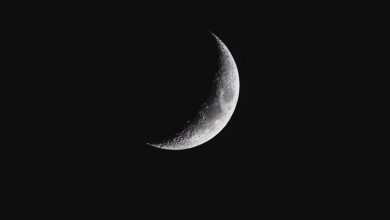Dracula’s Guest is a short story by Irish writer Bram Stoker, who is also the author of the immensely well-known novel, Dracula. It opens with the unnamed protagonist, also serving as the writer, traversing the European countryside (particularly Munich) which he decides to explore on Walpurgis Night. The story combines elements of folklore with Romantic themes, making it an iconic short story largely believed to be the deleted first chapter of Dracula. It was published in 1914 in the collection Dracula’s Guest and Other Weird Stories.
Dracula’s Guest | Summary
The story begins with an unnamed Englishman who is traveling through Europe to reach Castle Dracula in Transylvania. It is Walpurgis Night, as is informed by Johann, his hotelier. At dusk, he decides to explore the countryside but Johann refuses to, saying that he would rather stay inside at night. He tells him that the village the narrator wishes to visit is an “unholy place”, but tells the story half in English and half in German, which irritates the narrator. A carriage takes the Englishman to a ghost town in the environs of Munich and hurriedly drives away, nervous about being out past sunset on Walpurgis night. The Englishman notices a skeletal stranger watching him from a distance.
As the sky grows darker and the snow keeps falling, the narrator thinks about the many miles he has trekked. It is icy cold, and he realizes that he has found his way to a neglected cemetery. Very soon, a wild blizzard forces him to take shelter in a tomb. The mausoleum was impaled through the roof with an iron stake. The narrator notes that it belongs to ‘Countess Dolingen’ and on the back, in Russian letters is written “The Dead Travel Fast”. The narrator is filled with trepidation as he realizes that Walpurgis Night is the night when the graves of the dead reopened and the dead walk. Just then, a tornado bursts open on the narrator and he seeks refuge in the doorway of the marble tomb.
As he slowly pushes against the door to go inside the tomb, a bright light engulfs him and he sees a beautiful woman sleeping on a bier. A giant hurled him out of the tomb into the storm and before he has a chance to process this dreamlike sequence, another bright light shows him the beautiful woman rising in agony and screaming. He hears the howling of wolves and concludes that he has been seeing phantoms of the dead.
After his senses return, he realizes it was a nightmare when he feels a “warm rasping” at the throat of some animal. It is a wolf on top of him with his fangs at his throat, licking it. His blood curdles at the sight but the wolf is keeping him warm in the horrid snow. A group of men with torches scare the wolf off and come to see whether the Englishman is alive or dead. They are surprised to find him alive despite the unnatural size of the wolf.
The ruins of the tomb which have burst in the storm are explored by the horsemen and they conclude that the Englishman is uninjured. His neck, however, is aching with a strange pain at the spot where the wolf had been licking him earlier. They take him back to his hotel, where the hotelier had received a telegram from Count Dracula asking him to ensure the utmost protection of his guest from “snow”, “wolves” and the “night”.
Dracula’s Guest | Analysis
It is widely believed that Dracula’s Guest is the deleted first chapter of Bram Stoker’s brilliant epistolary novel, Dracula where an Englishman named Jonathan Harker is on his way to Transylvania to meet the Count. Written in first person and the narrator assumed to be Jonathan Harker, Dracula’s Guest shows a deep influence of folklore with its usage of the beliefs of Walpurgis Night as well as the description of the wolf, who is described almost as a werewolf. This is interesting since it is a known fact that Stoker loved reading folklore from a young age and aspired to be an author. The Countess whose tomb the narrator finds represents Eleonor von Schwarzenberg, one of the pioneer characters of European vampirism, elucidating Stoker’s mastery over folklore.
The narrator’s curiosity gets the best of him in the story. He put himself in harm’s way; Stoker exhibits a very human nature of being curious about the unknown. He juxtaposes two very different personalities- Johann, who is fearful of the unknown and full of superstitions, while the protagonist is given the faculty of curiosity.
Stoker also employs imagery vividly in his story which is a particularity of Romanticism; feelings of loneliness and fear in a forest, imagic descriptions of snow and storm, picturisation of the cold and blizzard, etc. Nature seems to foreshadow impending troubles that lay on the narrator’s path. The story deals less with intellect and rationality but rather plays with Romantic themes to illustrate supernatural forces dominating the narrative. The setting thus is eerie, macabre with an increasing sense of foreboding.
Count Dracula’s sense of providence ultimately saves Harker’s life; whether the latter’s experience at the cemetery, the dreamlike sequence was real, or merely a game played by the Count himself on his visitor is unknown, but nature’s violence through the storm and lightning, and its unexplored warmth through the wolf’s protection create a bone-chilling plot for the reader in Dracula’s Guest.
Dracula’s Guest | Character Sketch
The Narrator
The narrator is widely believed to be Bram Stoker’s novel Dracula’s protagonist Jonathan Harker. He is an intrinsically curious man who wishes to explore the countryside. He is shown as a rational man of a scientific temperament who does not believe in the superstitions and beliefs of Walpurgis Night.
Johann
Johann represents a completely opposite temperament to that of the narrator; he is fearful of the unknown and believes in the many superstitions associated with Walpurgis night. He refuses to go to the village with the narrator and calls it “unholy”.
Count Dracula
Though the story is titled Dracula’ Guest, Dracula himself is mentioned only at the end of the story. There is not much description of him outside the telegram except for his sense of providence– he describes the narrator as an important visitor who is “English and adventurous”. It is his telegram that saves the narrator’s life. Since literary vampires are often described as bats or wolves, the wolf in the story can be interpreted as Dracula himself who had been protecting the narrator from the intense cold, bringing him no harm.
Literary Devices
- Imagery: Bram Stoker uses imagery throughout the story to paint a macabre picture of the narrator’s surroundings. The storms, blizzards, the glistening snow that falls too quickly and covers everything in white, etc.- all contribute to creating a setting fit for the main action of the story.
- Foreshadowing: The imagery serves as a creator for a mood of constant foreboding of something evil.
- Personification: Personification is used in the following lines-
“With the moonlight, there came a fierce sigh of the storm which appeared to resume its course with a long, low howl, as of many dogs or wolves.”
Dracula’s Guest by Irish author Bram Stoker is a fascinating short story, widely assumed to be his novel Dracula’s first chapter. While the titular Dracula appears at the very end of the story only in the telegram that he sends the hotelier, his presence dominates the story, creating a macabre setting in which the main action takes place. It amalgamates particularities of Romanticism to create a Gothic story by portraying nature and its extremities, as well as folk elements like werewolves and vampires.



